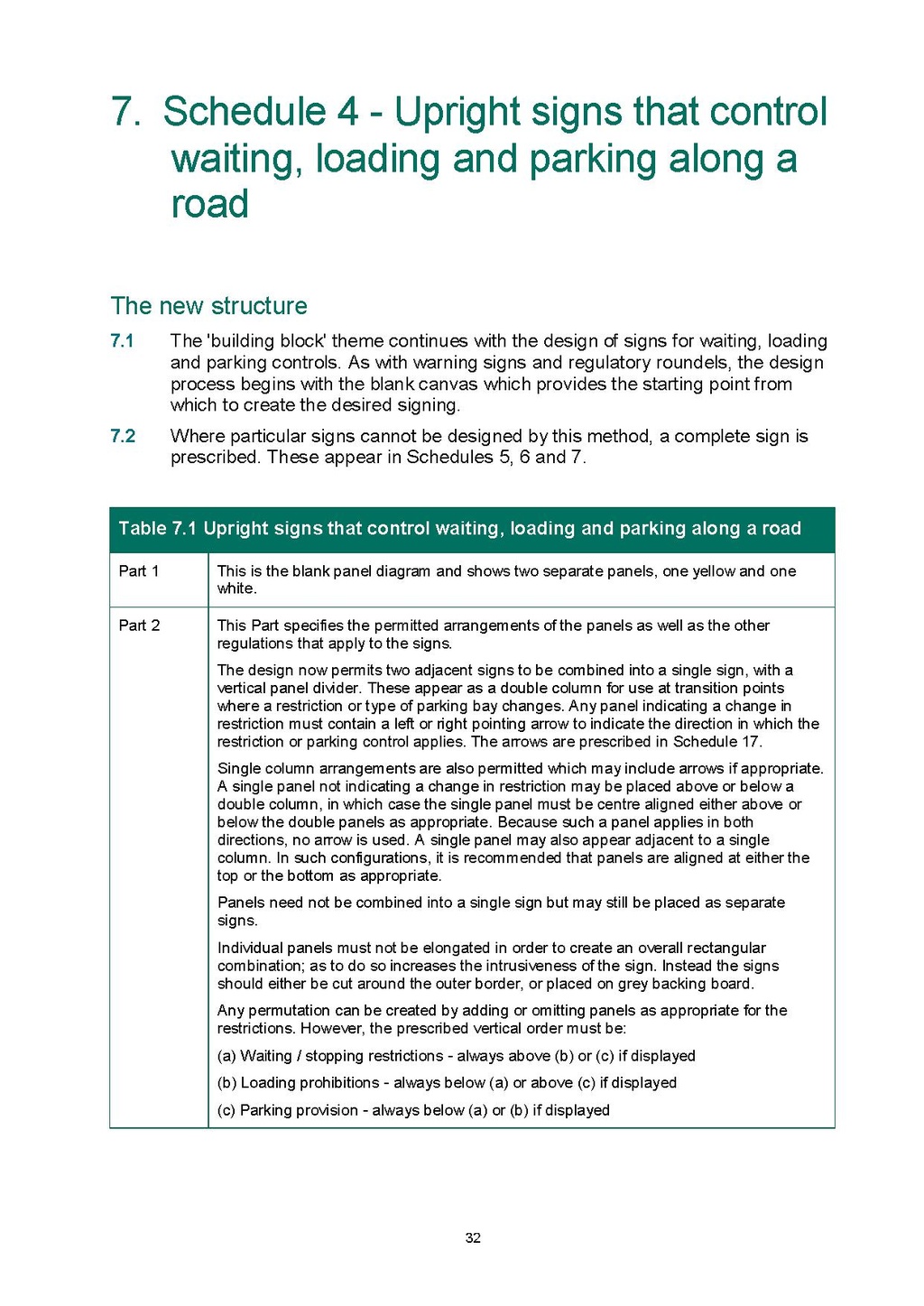7. Schedule 4 - Upright signs that control waiting, loading and parking along a road
The new structure
| Part 1 | This is the blank panel diagram and shows two separate panels, one yellow and one white. |
| Part 2 | This Part specifies the permitted arrangements of the panels as well as the other regulations that apply to the signs.
The design now permits two adjacent signs to be combined into a single sign, with a vertical panel divider. These appear as a double column for use at transition points where a restriction or type of parking bay changes. Any panel indicating a change in restriction must contain a left or right pointing arrow to indicate the direction in which the restriction or parking control applies. The arrows are prescribed in Schedule 17. Single column arrangements are also permitted which may include arrows if appropriate. A single panel not indicating a change in restriction may be placed above or below a double column, in which case the single panel must be centre aligned either above or below the double panels as appropriate. Because such a panel applies in both directions, no arrow is used. A single panel may also appear adjacent to a single column. In such configurations, it is recommended that panels are aligned at either the top or the bottom as appropriate. Panels need not be combined into a single sign but may still be placed as separate signs. Individual panels must not be elongated in order to create an overall rectangular combination; as to do so increases the intrusiveness of the sign. Instead the signs should either be cut around the outer border, or placed on grey backing board. Any permutation can be created by adding or omitting panels as appropriate for the restrictions. However, the prescribed vertical order must be: (a) Waiting / stopping restrictions - always above (b) or (c) if displayed (b) Loading prohibitions - always below (a) or above (c) if displayed (c) Parking provision - always below (a) or (b) if displayed |
32
